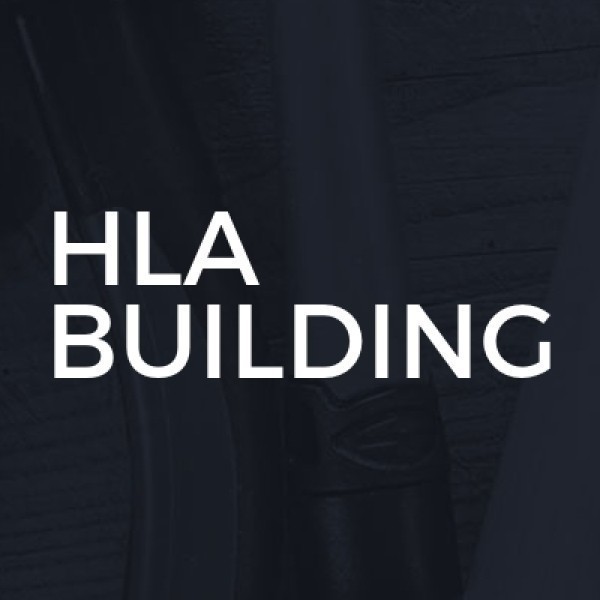Loft Conversions in St Ives
Filter your search
Post your job FREE and let trades come to you
Save time by filling out our simple job post form today and your job will be sent to trades in your area so you can sit back, relax and wait for available trades to contact you.
Post your job FREESearch Loft Conversions in places nearby
Introduction to Loft Conversions in St Ives
Loft conversions in St Ives have become increasingly popular as homeowners seek to maximise their living space without the hassle of moving. Nestled in the picturesque county of Cornwall, St Ives offers a unique blend of coastal charm and modern living, making it an ideal location for enhancing your home. Whether you're looking to create an additional bedroom, a home office, or a cosy retreat, a loft conversion can be a cost-effective and stylish solution.
The Appeal of Loft Conversions
Loft conversions are an attractive option for many reasons. They not only add value to your property but also provide a practical solution to space constraints. In St Ives, where property prices are on the rise, a loft conversion can be a savvy investment. Moreover, the process is often quicker and less disruptive than a full-scale extension, allowing you to enjoy your new space sooner.
Understanding the Basics of Loft Conversions
Before embarking on a loft conversion project, it's essential to understand the basics. A loft conversion involves transforming an unused attic space into a functional room. This process typically includes structural alterations, insulation, and the installation of windows and staircases. Depending on your needs and budget, you can choose from various types of loft conversions, each with its own set of advantages.
Types of Loft Conversions
There are several types of loft conversions to consider, each offering unique benefits and challenges. Understanding these options will help you make an informed decision that aligns with your vision and budget.
Dormer Loft Conversions
A dormer loft conversion is one of the most popular choices in St Ives. This type of conversion involves extending the existing roof to create additional headroom and floor space. Dormers can be added to the rear or side of the property, and they often feature windows to enhance natural light. This option is ideal for those seeking a straightforward and cost-effective solution.
Mansard Loft Conversions
Mansard loft conversions are more extensive and involve altering the entire roof structure. This type of conversion provides maximum space and is often used in terraced houses. Mansards have a flat roof with a steep rear slope, creating a spacious and versatile living area. While this option is more expensive, it offers significant benefits in terms of space and design flexibility.
Hip to Gable Loft Conversions
Hip to gable loft conversions are suitable for properties with a hipped roof. This conversion involves extending the sloping side of the roof to create a vertical gable wall, resulting in additional space. This type of conversion is particularly popular in semi-detached and detached homes in St Ives, as it seamlessly blends with the existing architecture.
Velux Loft Conversions
Velux loft conversions, also known as roof light conversions, are the simplest and most cost-effective option. This type of conversion does not require significant structural changes, as it involves installing Velux windows into the existing roof slope. Velux conversions are ideal for properties with ample headroom and are perfect for creating a bright and airy space.
Planning and Regulations for Loft Conversions in St Ives
Before starting your loft conversion project, it's crucial to understand the planning and regulatory requirements in St Ives. Navigating these regulations ensures that your conversion is compliant and avoids potential legal issues.
Planning Permission
In many cases, loft conversions fall under permitted development rights, meaning they do not require planning permission. However, there are exceptions, particularly for properties in conservation areas or listed buildings. It's essential to consult with the local planning authority in St Ives to determine if your project requires permission.
Building Regulations
Regardless of whether planning permission is needed, all loft conversions must comply with building regulations. These regulations ensure that the conversion is structurally sound, energy-efficient, and safe. Key areas covered by building regulations include structural integrity, fire safety, insulation, and ventilation.
Party Wall Agreements
If your property is semi-detached or terraced, you may need a party wall agreement. This legal agreement is required when work affects a shared wall with a neighbour. It's advisable to discuss your plans with neighbours early in the process to avoid disputes and ensure a smooth project.
Design Considerations for Loft Conversions
Designing a loft conversion involves careful planning to create a space that meets your needs and complements your home's existing style. From layout to lighting, several factors influence the overall design.
Maximising Space and Light
One of the primary goals of a loft conversion is to maximise space and natural light. Consider the placement of windows, skylights, and mirrors to enhance brightness. Opt for light-coloured walls and flooring to create an open and airy feel.
Choosing the Right Layout
The layout of your loft conversion should reflect its intended use. For a bedroom, consider the placement of the bed and storage solutions. If you're creating a home office, ensure there's ample space for a desk and seating. Tailor the layout to your lifestyle and preferences.
Incorporating Storage Solutions
Storage is a crucial consideration in any loft conversion. Utilise the eaves and awkward spaces for built-in storage solutions. Consider bespoke shelving, wardrobes, and cupboards to keep the area organised and clutter-free.
Heating and Insulation
Proper heating and insulation are essential for creating a comfortable loft space. Ensure the conversion is well-insulated to retain heat and reduce energy costs. Consider underfloor heating or radiators to maintain a cosy environment year-round.
Cost Considerations for Loft Conversions in St Ives
The cost of a loft conversion in St Ives can vary significantly depending on the type of conversion, materials used, and the complexity of the project. Understanding these costs will help you budget effectively and avoid unexpected expenses.
Factors Influencing Cost
Several factors influence the cost of a loft conversion, including the size of the space, the type of conversion, and the quality of materials. Additional costs may arise from planning applications, building regulations, and party wall agreements.
Budgeting for Your Loft Conversion
Creating a detailed budget is essential for managing costs effectively. Consider all aspects of the project, from design and materials to labour and permits. It's advisable to set aside a contingency fund for unexpected expenses that may arise during the project.
Financing Options
If you're concerned about financing your loft conversion, several options are available. Consider remortgaging your home, taking out a home improvement loan, or using savings. Explore different financing options to find one that suits your financial situation.
Choosing the Right Contractor for Your Loft Conversion
Selecting a reputable contractor is crucial for the success of your loft conversion project. A skilled and experienced contractor will ensure the work is completed to a high standard and within budget.
Researching Potential Contractors
Start by researching potential contractors in St Ives. Look for companies with a strong track record of successful loft conversions and positive customer reviews. Ask for recommendations from friends and family who have undertaken similar projects.
Evaluating Quotes and Proposals
Obtain quotes from multiple contractors to compare costs and services. Evaluate each proposal carefully, considering factors such as experience, timeline, and materials. Choose a contractor who offers a competitive price and demonstrates a clear understanding of your vision.
Checking Credentials and References
Before hiring a contractor, check their credentials and references. Ensure they are registered with relevant trade associations and have the necessary insurance coverage. Contact previous clients to inquire about their experience and satisfaction with the contractor's work.
Frequently Asked Questions
- Do I need planning permission for a loft conversion in St Ives? In many cases, loft conversions fall under permitted development rights, but it's essential to check with the local planning authority.
- How long does a loft conversion take? The duration of a loft conversion varies depending on the complexity of the project, but it typically takes between 6 to 12 weeks.
- Can I convert any loft space? Not all lofts are suitable for conversion. Factors such as headroom, roof structure, and access must be considered.
- Will a loft conversion add value to my home? Yes, a well-executed loft conversion can significantly increase the value of your property.
- What is the most cost-effective type of loft conversion? Velux loft conversions are generally the most cost-effective option, as they require minimal structural changes.
- How can I ensure my loft conversion is energy-efficient? Proper insulation, energy-efficient windows, and heating solutions can enhance the energy efficiency of your loft conversion.
Loft conversions in St Ives offer a fantastic opportunity to expand your living space and add value to your home. By understanding the different types of conversions, planning and regulatory requirements, and design considerations, you can embark on a successful project that meets your needs and enhances your lifestyle. With careful planning and the right contractor, your dream loft conversion can become a reality, providing a beautiful and functional space for years to come.


















